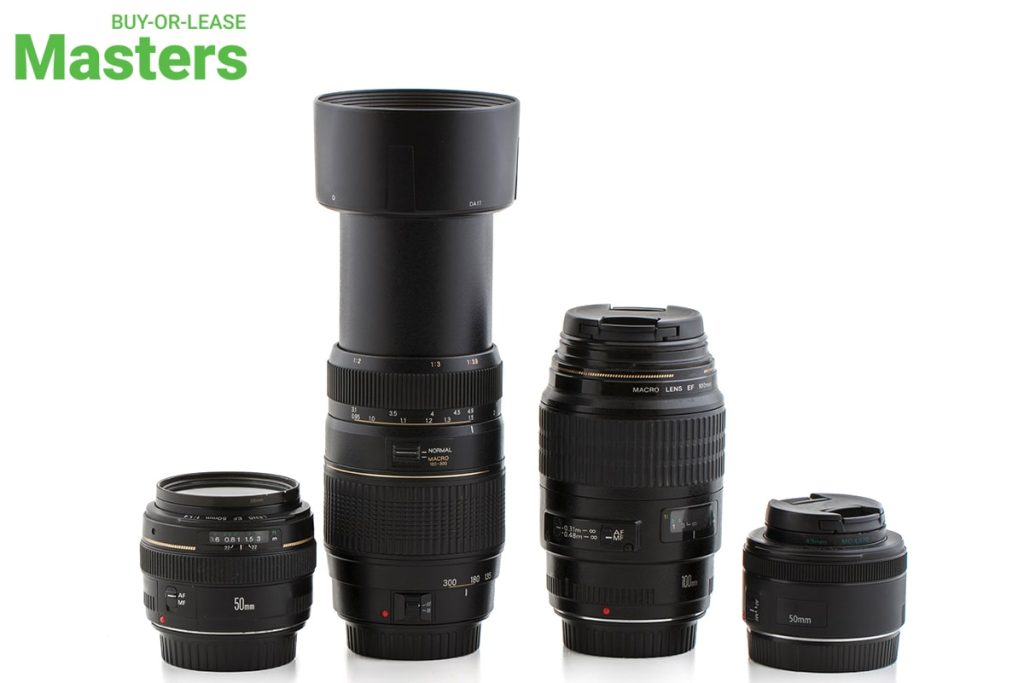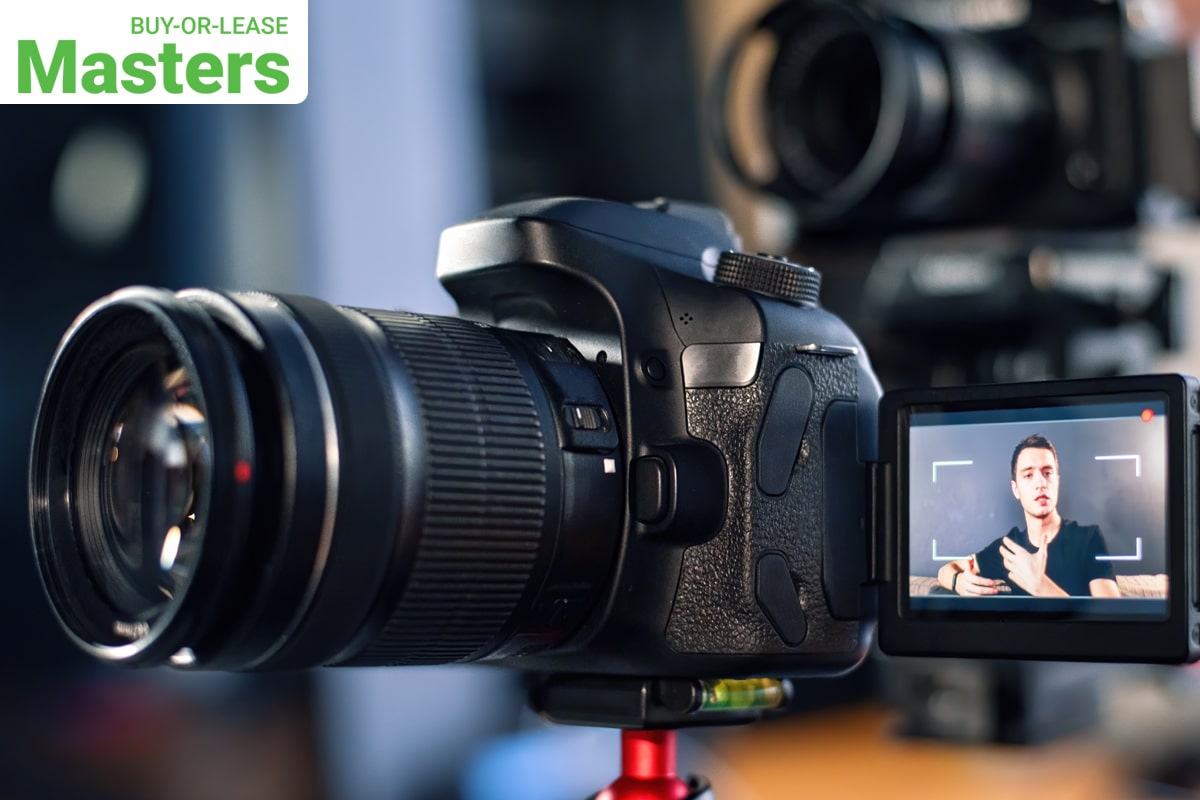Do you ever wonder how your camera captures those crisply focused images? Your camera has the ability to autofocus, adjust depth of field, and switch lenses but do you understand what’s going on behind the scenes as it does all these things?
In this article, Master Buy Or Lease will break down some of the basics of camera focusing. We’ll discuss why autofocusing is important and explore different types of focus modes employed in modern digital cameras. Plus, we’ll look at specific tips for getting sharp shots that will make your photography come alive.
Whether you’re a seasoned photographer or are just starting out with a DSLR – understanding how to access quick-firing autofocus features can take your photos up a notch!
What is camera focus?

Camera focus is the process of adjusting the lens to achieve a clear and sharp image. It involves moving parts within the camera that work together to bring your subject into focus. Without proper focusing, images can appear blurry or out of focus, which can be frustrating for any photographer.
In order to understand how camera focus works, it’s important to first understand some key terms related to focusing. There are two types of focus that you should be familiar with – autofocus and manual focus. Let’s dive into these in more detail.
Types of Focus Modes
Now that we understand the basics of focusing, let’s take a look at some common focus modes found in digital cameras.
- Single-Servo Autofocus (AF-S): This mode is best for stationary subjects as it focuses on a single point and then locks the focus until the image is captured.
- Continuous-Servo Autofocus (AF-C): This mode is ideal for moving subjects, as it continuously adjusts the focus to keep up with the subject’s movements.
- Manual Focus (MF): As mentioned before, this mode allows you to manually adjust the focus on your own.
- Automatic (AF-A): This mode automatically switches between AF-S and AF-C depending on whether the subject is still or moving.
Understanding these different modes can help you choose the right one for your specific shooting situation. It’s always a good idea to experiment with each mode and see which one best fits your needs.
Autofocus

Autofocus is the automatic feature built into most cameras that allows the lens to automatically adjust itself in order to bring your subject into sharp focus. This is particularly useful for photographers who need to quickly capture a moment without having to spend time manually adjusting the focus.
Autofocus works by using sensors within the camera to detect contrast and determine where the sharpest point of focus is. Once it has found this point, the lens quickly focuses itself, allowing you to take a sharp image without any effort on your part.
Now that we have an understanding of the different types of focus modes, let’s take a look at some pros and cons of using autofocus vs manual focus.
Pros of Autofocus:
- Quick and convenient: Autofocus allows you to quickly adjust the focus without having to manually turn the lens.
- Great for beginners: For those just starting out with photography, autofocus can be a helpful tool in achieving sharp images.
- Can track moving subjects: As mentioned before, some autofocus modes are specifically designed to track and keep up with moving subjects.
Cons of Autofocus:
- Can be unreliable: In certain situations, autofocus may not work as well as manual focus. For example, in low light or with low contrast subjects.
- May result in misfocus: Sometimes the camera may focus on the wrong part of the image, resulting in an out-of-focus shot.
Manual Focus

On the other hand, manual focus requires you to physically turn the focus ring on your lens in order to adjust the focus yourself. This can be useful when trying to achieve a specific effect or when working with subjects that may be difficult for autofocus to detect, such as low contrast scenes or moving objects.
Pros of Manual Focus:
- More control: With manual focus, you have complete control over where the focus is placed within the frame.
- Useful for specific situations: As mentioned before, manual focus can be useful in certain situations where autofocus may struggle.
- Can result in more accurate focus: In some cases, manual focus can result in a sharper and more accurate final image.
Cons of Manual Focus:
- Requires more time and effort: Manual focus can be a slower process compared to autofocus, as it requires physically adjusting the focus ring.
- Takes practice: Achieving precise focus with manual focus takes time and practice to master.
- Difficult with moving subjects: It can be challenging to manually adjust the focus when working with fast-moving subjects.
However, both methods have their own set of cons as well. Autofocus can sometimes struggle to detect subjects accurately or may not work well in low light situations. Manual focus can be time-consuming and may not be suitable for fast-paced shooting scenarios.
Manual vs Autofocus: Finding the Right Balance
So, which is better – manual or autofocus? The answer is not so simple. It ultimately depends on your shooting situation and personal preferences.
For beginners, autofocus can be a great starting point to get comfortable with camera focusing. As you gain more experience, it’s important to also practice and develop your skills in manual focus as well. This will give you more control and allow you to achieve creative effects that may not be possible with autofocus alone.
In the end, finding a balance between manual and autofocus is key. It’s important to understand how both methods work and when to use each one in order to capture the perfect shot.
Tips for getting the most out of autofocus
- Use single-point focus: This allows you to choose a specific point in the frame for the camera to focus on, giving you more control.
- Consider turning off face detection: While this feature can be useful, it may also cause your camera to focus on the wrong subject or part of the image.
Tips for getting the most out of manual focus:
- Use a tripod: This will help keep your camera steady while manually adjusting the focus.
- Use focus peaking: Some cameras have a feature called focus peaking that highlights areas of sharp contrast, making it easier to see when an image is in focus.
Both autofocus and manual focus are important tools for achieving sharp
. It’s important to understand how each one works and when to use them in order to capture the perfect shot. With practice, you can find the right balance between the two and take your photography skills to the next level. So go out there and experiment with both methods – you never know which one may be best for a particular situation! Happy shooting! 3 2 1 time’s up!
Remember, mastering camera focus takes time and practice, so don’t get discouraged if you don’t get it right away. Keep experimenting and learning, and you’ll soon be able to confidently adjust the focus on your own, whether it’s through manual or autofocus mode. Understanding the different modes of autofocus can also help you choose the best one for a specific shooting situation. With these tips in mind, you are now equipped to take your photography skills to the next level and capture stunning images with perfect focus. So keep practicing and never stop learning the possibilities with camera focus are endless.
How to make sure your photos are always crisp and sharp?
The key to ensuring crisp and sharp photos is understanding how camera focus works and knowing when to use autofocus or manual focus. It’s also important to practice using both methods in different shooting scenarios, as this will help you develop a better understanding of which method works best in each situation.
Additionally, using techniques such as using single-point focus or focus peaking can further improve the accuracy and sharpness of your images. Lastly, always make sure to keep your camera steady, whether that means using a tripod or finding a stable surface to rest it on. With these tips in mind, you can confidently capture crisp and sharp photos every time! 3 2 1 time’s up.
Conclusion
Camera focus definitely plays an important role in yielding favors for photographers of all experience levels. Now that you know a bit more about auto-focus modes, shutter speed, and aperture settings, you can make use of this knowledge to capture stunning, sharply focused images. Thanks to modern DSLRs, getting sharp shots has never been easier, now all that’s left for you is to get out practice (and have some fun!) with your camera.
If we missed any other points or tips regarding camera focus be sure to leave a comment below. If everyone shares their knowledge and expertise, we can help create a resourceful, ever-growing network of photographers. Keep practicing your skills and never give up on striving for sharper images!


Leave a Reply